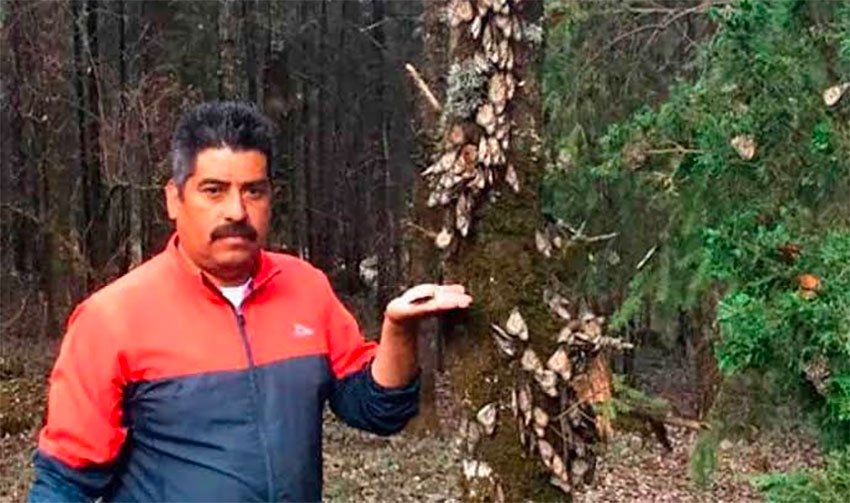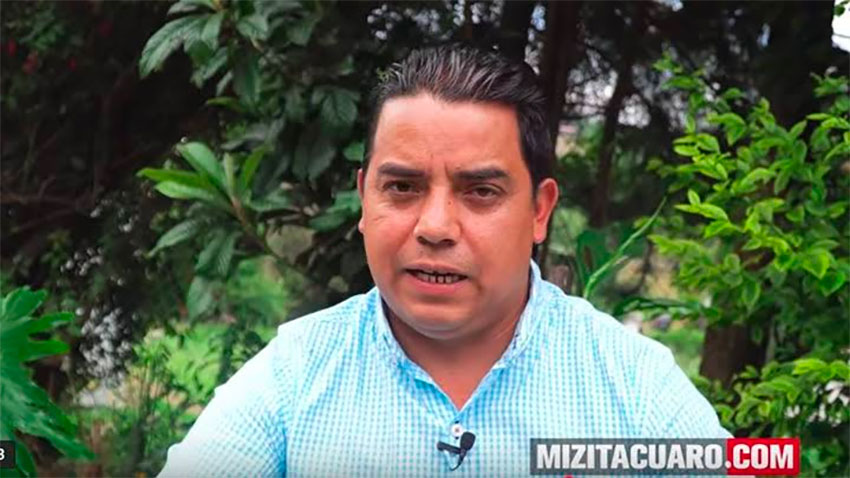The butterfly conservationist Homero Gómez González suffered head trauma before he drowned, Michoacán authorities said on Thursday.
The state Attorney General’s Office (FGE) had said that Gómez’s body, which was found Wednesday in a holding pond in the municipality of Ocampo, showed no signs of violence and that the most likely cause of death was drowning.
However, in a new statement issued Thursday night, the FGE said that detailed autopsy results showed that the activist had suffered a head injury.
“It was determined that the cause of death is mechanical asphyxia due to submersion in a person with head trauma,” it said.
The FGE did not say how the injury might have been inflicted but indicated that an investigation continued, suggesting that the death was not accidental. It appeared to rule out robbery as a possible motive, stating that 9,090 pesos (US $480) was found on Gómez’s body.

The Associated Press reported that even before the Attorney General’s Office’s latest announcement, relatives of Gómez, who disappeared 16 days before his body was found, suspected that the death wasn’t accidental.
“Something strange is happening, because they’re finishing off all the activists, the people who are doing something for society,” the deceased’s brother, Amado Gómez, said at the funeral on Thursday.
Gómez González, who was head administrator of the El Rosario monarch butterfly sanctuary in Angangueo, Michoacán, had fought to keep loggers and avocado farmers out of the reserve for the past 10 years.
He led anti-logging protests, participated in patrols to prevent the illegal falling of trees and worked to persuade some 260 communal landowners to replant trees on land that had been cleared for the cultivation of corn. Gómez’s efforts resulted in the reforestation of about 150 hectares of land, according to locals.
His death, according to other activists, could be connected to disputes over illegal logging, water or the income generated from tourism at the El Rosario sanctuary. Greenpeace México called it a “murder.”
“We condemn the fact that defending the land, natural resources and biodiversity converts activists into targets for threats, persecution and the cowardly act of taking their lives,” the group said.

President López Obrador, who described Gómez’s death as “regrettable” and “painful,” said Thursday that criminal organizations were involved and that the government is working on the case.
Orley Taylor, an ecology professor at the University of Kansas and director of butterfly conservation group Monarch Watch, told the Associated Press that it wasn’t clear what impact the death would have on conservation efforts in the El Rosario sanctuary.
“There are increasing pressures on the forest from both the illegal loggers and the avocado growers and possibly the gangs that extort protection from various parties in the region,” he said.
“This dynamic is widely known, but how to deal with these threats to the forests, residents and monarchs will be a challenge for the [Monarch Butterfly Biosphere Reserve], its residents and local and regional authorities.”
According to Amado Gómez, a lot of communal landowners fear that the death of his brother will spell the end for the forests of eastern Michoacán.
“I would like to ask the authorities to do their job and do more to protect activists like my brother, because lately in Mexico a lot of activists have died. With his death, not only my family lost a loved one but the whole world, and the monarch butterfly and the forests lost, too,” he said.
The organizations Amnesty International and Global Witness reported in October of last year that Mexico is growing increasingly dangerous for environmental activists.
Global Witness had documented 12 murders of environmentalists in 2019 by that time, and reported that there were 14 in 2018 and 15 in 2017, up from three the year before.
Source: The Associated Press (en)
